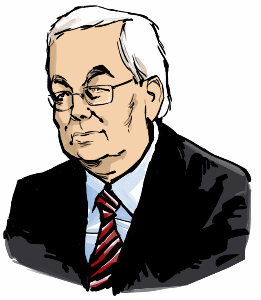Background
(Giorgio de Santillana)
This is meant to be only an essay. It is a first reconnaissance of a realm well-nigh unexplored and uncharted. From whichever way one enters it, one is caught in the same bewildering circular complexity, as in a labyrinth, for it has no deductive order in the abstract sense, but instead resembles an organism tightly closed in itself, or even better, a monumental „Art of the Fugue.“
The figure of Hamlet as a favorable starting point came by chance. Many other avenues offered themselves, rich in strange symbols and beckoning with great images, but the choice went to Hamlet because he led the mind on a truly inductive quest through a familiar landscape – and one which has the merit of its literary setting. Here is a character deeply present to our awareness, in whom ambiguities and uncertainties, tormented self-questioning and dispassionate insight give a presentiment of the modern mind. His personal drama was that he had to be a hero, but still try to avoid the role Destiny assigned him. His lucid intellect remained above the conflict of motives – in other words, his was and is a truly contemporary consciousness. And yet this character whom the poet made one of us, the first unhappy intellectual, concealed a past as a legendary being, his features predetermined, pre-shaped by long-standing myth. There was a numinous aura around him, and many clues led up to him. But it was a surprise to find behind the mask an ancient and all-embracing cosmic power – the original master of the dreamed-of first age of the world.
Yet in all his guises he remained strangely himself. The original Amlóði, as his name was in Icelandic legend, shows the same characteristics of melancholy and high intellect. He, too, is a son dedicated to avenge his father, a speaker of cryptic but inescapable truths, an elusive carrier of Fate who must yield once his mission is accomplished and sink once more into concealment in the depths of time to which he belongs: Lord of the Golden Age, the Once and Future King.
This essay will follow the figure farther and farther afield, from the Northland to Rome, from there to Finland, Iran, and India; he will appear again unmistakably in Polynesian legend. Many other Dominions and Powers will materialize to frame him within the proper order.
Amlóði was identified, in the crude and vivid imagery of the Norse, by the ownership of a fabled mill which, in his own time, ground out peace and plenty. Later, in decaying times, it ground out salt; and now finally, having landed at the bottom of the sea, it is grinding rock and sand, creating a vast whirlpool, the Maelstrom (i.e. the grinding stream, from the [Icelandic] verb mala, „to grind“), which is supposed to be a way to the land of the dead. This imagery stands, as the evidence develops, for an astronomical process, the secular shifting of the sun through the signs of the zodiac which determines world-ages, each numbering thousands of years. Each age brings a World Era, a Twilight of the Gods. Great structures collapse; pillars topple which supported the great fabric; floods and cataclysms herald the shaping of a new world. (Hamlet’s Mill – An Essay on Myth and the Frame of Time, 1969; Second Paperback Edition, David R. Godine, Publisher, Boston, 1983, pp. 1-2.)
***
1. Amlóði introduced by Snorri Sturluson
Edda, Skáldskaparmál, Ch. 33.
11285 = Hvatt kveða hræra Grótta
9506 = hergrimmastan skerja
10802 = út fyrir jarðar skauti
9348 = eylúðrs níu brúðir,
12121 = þær er, lungs, fyrir löngu,
8424 = líðmeldr, skipa hlíðar
10874 = baugskerðir rístr barði
6012 = ból, Amlóða mólu.
78372
The text is full of archaic kennings which defy translation. However, the point of its presentation here is to show that Gabriel Harvey’s curious poem (seemingly) on the occasion of Christopher Morley’s “murder” in 1593 – through its title and two Latin phrases included therein – may be construed as establishing contextual links to the Saga tradition of Sturla Þórðarson (d. 1284) who was Snorri Sturluson’s nephew and literary collaborator.
2. Gabriel Harvey’s GORGON poem
14786 = GORGON, Or the Wonderfull Yeare
17467 = Vis consilii expers, mole ruit sua.¹
10384 =Fata immatura vagantur.²
25920 = Platonic Great Year
9814 = Sturla Þórðarson
1 = Monad
78372
¹ Force without wisdom falls by its own weight.
² Premature deaths roam abroad.
Various versions sprang up of Morley/Marlowe’s “murder”, including one by Thomas Beard in a piece entitled The Theatre of God’s Judgements. Beard’s scathing language could not have been more appropriate if the newly departed had been The Devil incarnate.
When the dates of Morley/Marlowe’s baptism on 26 February 1564 and death on May 30, 1593 are applied to The Devil, 3858, and the “cause” of his death is assumed to have been Advent of Christianity, 1000, as in 3858 + 2612 + 1564 + 3003 + 1593 + 1000 = 13630, the Cipher Value of The Devil’s life-span ties Brennu-Njálssaga‘s Omega sentence, Ok lýk ek þar Brennu-Njálssögu, 13530, to the Cipher Symbol of Ragnarök, 100 as in 13530 + 100 = 13630.
With The Devil having been brought into the picture, as in Matt. Ch. IV, the scene and date of Snorri Sturluson’s “murder” on Autumnal Equinox 1241 A.D. are effectively made to serve as the background to Brennu-Njálssaga and the Workes of Shakespeare as indicated in 3-4 below – and to be elaborated in a follow-up posting.
3. The Devil and Snorri Sturluson’s “murder”
3858 = The Devil
11359 = Snorri Sturluson
4884 = Reykjaholt
2307 = 23 September
1241 = 1241
Brennu-Njálssaga
6257 = Mörðr hét maðr.
12685 = Höfðingjaskipti varð í Nóregi.
11274 = Fara menn við þat heim af þingi.
13530 = Ok lýk ek þar Brennu-Njálssögu.
67395
A stand-alone sentence in Italian and its translation in English were printed without explanation at the end of Vol. I of Don Quixote published in1605. In a short piece, purportedly written after his death in 1284 A.D., Sturla Þórðarson is reported to have been slandered in Iceland and humiliated while aboard the ship of the King of Norway. There Sturla entertains the Queen and others with his story-telling but the King ignores him. Finally, thanks to the Queen‘s intercession, the King agrees to have Sturla come before him and present his poem about the King‘s Father.
As Sturla concludes his presentation, the King declares him a better poet than the Pope, using a verb (að kveða) which means “to sing”. The stand-alone sentence in Italian and its translation in English in Don Quxiote Vol I serve to tie this fortunate ending to the imagery in 3. above. And, last but not least, they would convey Francis Bacon’s identification of Sturla Þórðarson as the anonymous author of Brennu-Njálssaga, a better poem than that of the Pope.
4. “I consider you a better poet than the Pope.”
19129 = Forse altro canterà con miglior plettro.
22601 = Perhaps another will sing with a better voice.
9814 = Sturla Þórðarson
15851 = Þat ætla ek at þú kveðir betr en páfinn.
67395
To be continued.
***
A calculator that converts letters into numerical values is posted at:
http://www.light-of-truth.com/ciphersaga.htm

 Gunnar Tómasson
Gunnar Tómasson